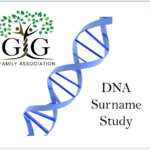
by Phillip G. Goff, GGFA Director of Genetic Genealogy
If you search for the term “brick wall” on the the GGFA website or GGFA Facebook site, is mentioned scores of times. These elusive ancestors may have been born as recently as the 19th century and as early as the 1500s when parish recordkeeping of baptisms, marriages and burials started in England. For most African-Americans, the 1870 census is the brick wall point at which nothing earlier can be discovered.
The term “brick wall” to describe the point at which records run out was in use by 1973. A Google Books search finds as the first instance of the phrase when it appeared in the book, Cotton Picking: A Compilation of Cotten/Cotton Families – Volume 1: “If even one gap or brick – wall, genealogically speaking, has been solved for anyone, it will all be worthwhile.” The fact of most genealogy brick walls being in the 16th to 19th century did not change much for most of the 50 years since the publication of Cotten/Cotton. Today, the concept of a family tree brick wall has radically changed.
In 2023, Big Y 700 changes the definition of genealogical brick wall. Being stopped in the 16th to 19th centuries by poor or missing records, it is within the reach of all Gough and Goff families to extend their lineages back to about 800 years ago. If your Goff/Gough family branch has not yet taken Big Y 700, please reach out to dna@goff-gough.com to discuss how to take this step.
Phillip Goff is the co-author, along with Roy L. Lockhart, of The Four Goff Brothers of Western Virginia. Since 2004, he has run the Goff/Gough Surname DNA Study, which today has about 400 participants.
